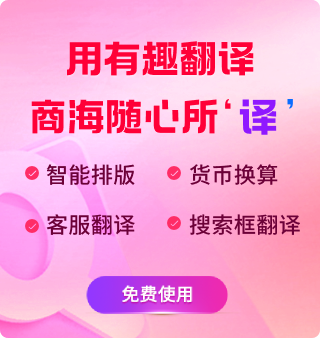建议跨境电商吗英文翻译
Should You Venture into Cross-Border E-commerce? A Detailed Analysis and Practical Tips for English Translation
With the increasing globalization of consumer markets and the rapid growth of digital commerce platforms, cross-border e-commerce has become a lucrative opportunity for businesses of all sizes. However, for many entrepreneurs and brands considering this step, the question remains: Should you invest in cross-border e-commerce? And if so, how can you ensure that your communication, particularly English translation, aligns with the expectations of an international audience?
This article will provide an in-depth analysis of whether cross-border e-commerce is a suitable path for your business, explore the challenges and opportunities it offers, and share valuable insights on English translation strategies to maximize your success.
I. Why Consider Cross-Border E-commerce?
1. Access to Global Consumer Markets
Cross-border e-commerce allows businesses to tap into a global audience, increasing their potential customer base exponentially. Markets like North America, Europe, Southeast Asia, and the Middle East are experiencing rapid growth in online shopping, driven by rising internet penetration and the convenience of e-commerce platforms.
Example:
China-based brands like Shein and Xiaomi successfully expanded into the US and European markets by targeting younger, tech-savvy consumers.
Key Insight:
If your product has a unique selling point or addresses a demand in underserved markets, cross-border e-commerce can provide significant growth opportunities.
2. Diversification of Revenue Streams
Selling to multiple markets reduces dependency on a single country’s economy and consumer preferences. For instance, if the domestic market experiences a slowdown, revenue from international customers can stabilize overall business performance.
3. Growing Consumer Trust in International Brands
Global consumers are increasingly open to shopping from international brands, thanks to improved payment security, streamlined logistics, and the convenience of services like Amazon Global, Shopify, and Alibaba.
Pro Tip:
To capitalize on this trend, present your brand as reliable and accessible by offering professional, well-translated English content. For many global markets, English serves as a "universal language" for trust-building.
4. Demand for Unique and Niche Products
Global consumers are often eager to purchase products that are unavailable or difficult to find in their local markets. Whether it’s handmade crafts, specialized tech gadgets, or region-specific beauty products, cross-border e-commerce enables businesses to cater to diverse consumer preferences.
Example:
A small tea company from India selling organic Darjeeling tea used Amazon and Etsy to reach health-conscious consumers in Europe and North America. By translating their product descriptions into English, they effectively communicated the tea’s premium quality and health benefits, achieving global success.
II. Challenges of Cross-Border E-commerce
While the opportunities are enticing, it’s essential to acknowledge the challenges associated with entering international markets:
1. Language Barriers and Communication Issues
One of the primary hurdles for cross-border e-commerce is ensuring clear and culturally appropriate communication with consumers. Inconsistent or poorly translated English can lead to misunderstandings, damage brand reputation, and even result in legal issues.
2. Cultural and Regulatory Differences
Each market has unique cultural preferences and regulations. For example:
- Cultural: US consumers may prefer direct and persuasive product descriptions, while Japanese consumers might favor detailed and polite language.
- Regulatory: The European Union has strict data privacy laws (GDPR) that businesses must adhere to, requiring clear and accurate translation of legal terms.
3. Logistics and Shipping Complexities
Handling international shipping, customs clearance, and returns can be complicated and costly. Inconsistent communication about shipping policies or delivery timelines due to translation errors can further frustrate global customers.
Pro Tip:
Ensure your shipping and return policies are translated into clear, concise English that minimizes ambiguity.
4. Competition and Market Saturation
Entering well-established markets like the US or Europe means competing with both local and international brands. To stand out, businesses must provide not only quality products but also flawless customer experiences, beginning with professional English translations.
III. Is Cross-Border E-commerce Right for You?
Here are a few factors to consider before taking the leap:
1. Product Viability
Does your product have global appeal?
Can it be easily shipped internationally (e.g., non-perishable goods, lightweight, no complex regulations)?
2. Financial Readiness
Do you have sufficient resources to invest in translation, localization, international marketing, and logistics?
3. Market Research
Have you identified target regions where your product has demand?
Are you aware of cultural, regulatory, and consumer behavior differences in those markets?
4. Commitment to Localization
Are you willing to adapt your brand message, content, and operations to meet the expectations of your target audience?
If the answer to these questions is yes, then cross-border e-commerce can be a strategic growth channel for your business.
IV. The Role of English Translation in Cross-Border E-commerce
As English is often the default or secondary language for many global markets, it plays a pivotal role in your cross-border e-commerce strategy. A poorly translated website or product listing can deter consumers and reduce conversions. Here’s why professional English translation matters:
1. Enhances Trust and Credibility
High-quality English content makes your brand appear professional and reliable. Conversely, poorly translated content can confuse consumers and raise doubts about your legitimacy.
2. Drives Sales with Persuasive Communication
Compelling product descriptions, marketing campaigns, and customer support content in English can persuade international consumers to choose your brand over competitors.
3. Supports SEO for Global Visibility
English-translated content optimized for search engines can improve your website’s ranking on Google and other platforms, making it easier for potential customers to find your products.
4. Facilitates Customer Support
Providing customer support in English ensures smooth communication with global buyers. Having pre-translated FAQs, email templates, and chatbot responses can save time and improve user satisfaction.
V. Practical Tips for English Translation in Cross-Border E-commerce
Invest in Professional Translators
Work with native-English-speaking translators who understand cultural nuances and have expertise in e-commerce terminology.
Localize, Don’t Just Translate
Adapt content to the cultural preferences of your target audience. For example, use units of measurement (inches vs. centimeters), currency (USD vs. GBP), and regional holidays in your promotions.
Example:
Instead of saying “Autumn Sale,” use “Fall Sale” for US audiences, as “autumn” is less commonly used in American English.
Focus on SEO-Friendly Translation
Identify keywords relevant to your industry and target market.
Incorporate these keywords naturally into your English-translated content.
Test Your Translations
Conduct A/B testing to evaluate how different translated versions of your content perform. Analyze metrics like click-through rates, bounce rates, and conversions to identify the most effective approach.
Leverage Translation Tools (with Caution)
Tools like SDL Trados, MemoQ, and Smartling can streamline translation workflows, but always ensure human oversight for accuracy and quality.
Maintain Consistency with a Style Guide
Develop a style guide with preferred terminology, tone of voice, and formatting to ensure brand consistency across all English-translated content.
VI. Case Study: A Cross-Border E-commerce Success Story
Brand Example: A Chinese electronics company expanded into the US market by selling on Amazon.
- Initial Challenge: Early listings had literal translations that confused customers (e.g., “bright screen” instead of “high-definition display”).
- Solution: The company hired a professional translation agency to rewrite product descriptions, emphasizing benefits like “crystal-clear HD visuals.”
- Result: Improved customer understanding led to a 25% increase in sales in just three months.
VII. Conclusion
Cross-border e-commerce offers exciting opportunities for businesses to scale globally, but it requires careful planning and execution. English translation, as a cornerstone of international communication, plays a vital role in building trust, driving sales, and ensuring seamless customer experiences.
For businesses considering cross-border e-commerce, the key is to approach translation as an investment, not a cost. By prioritizing high-quality, localized English content, you can effectively bridge cultural and linguistic gaps, positioning your brand for success in the global market.


